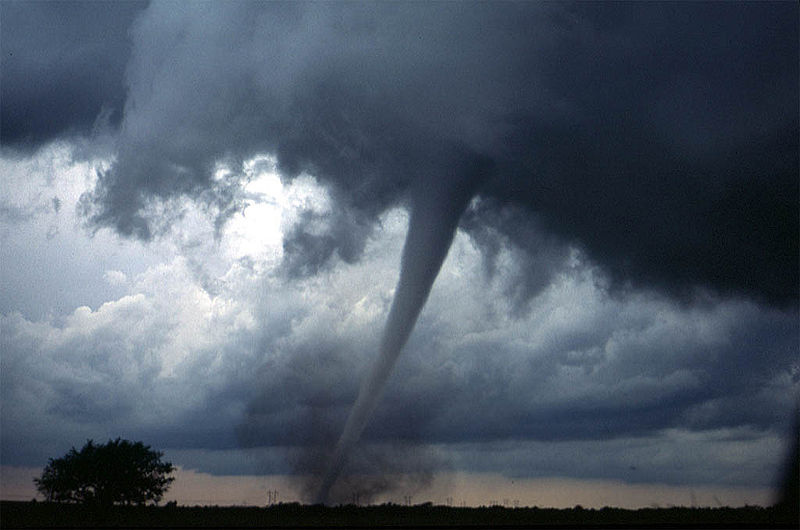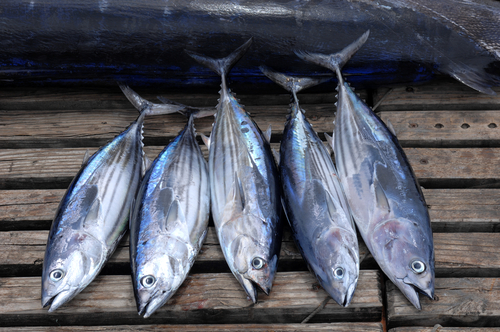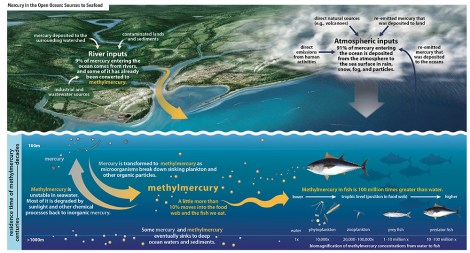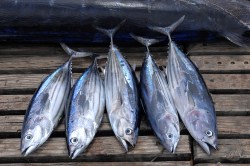
Shutterstock
Yes, there is water on Mercury, but there is also mercury in the water. Lots of it.
In fact, according to a giant new report called “Sources to Seafood: Mercury Pollution in the Marine Environment,” mercury pollution near the ocean’s surface has more than doubled as a result of human activities over the last century.
That mercury is largely invisible to most of us — invisible as it makes its way into fish and other wild seafood and largely invisible in our bodies when we eat that seafood. That is, until it causes major cognitive or developmental issues in babies born to women who have been exposed.
Of course, these days, most women of childbearing age are told to be cautious about the kinds of fish that are high in mercury (mainly top-of-the-food-chain species, such as tuna, swordfish, and shark). But how often do we hear about where it originates (that is, unless you’re a regular reader of Grist’s David Roberts)?
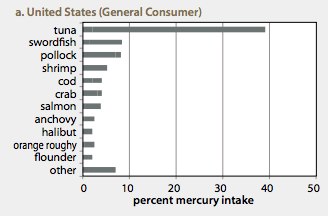
Americans get most of their mercury from tuna (mainly because it’s an affordable option).
“People don’t ever seem to know where the mercury comes from,” says Celia Chen, one of an impressive array of 70 mercury and marine scientists from universities across the country, including Dartmouth, Harvard, and Syracuse, who spent two years assembling the report.
“Most of the fish that people in the U.S. eat are from the open ocean. And most of the mercury that goes into the open ocean is from atmospheric emissions, which comes from fossil fuel burning,” says Chen, a food chain biologist from Dartmouth. Coal-fired power plants are the biggest source, globally. Of course, coastal areas are a different story; much of the seafood eaten in places like the Gulf of Maine, the Gulf of Mexico, and the San Francisco Bay come from other industrial sources (think old mining operations).
Chen and the other scientists worked together to create the first complete picture of the way mercury moves from these sources, around the ocean, and up the food chain. “We want to draw a straight line for the American public between those sources to the seafood they love,” she says.
The report is also aimed at policymakers, as the U.S. prepares to negotiate with other nations about mercury contamination and regulation at United Nations’ Intergovernmental Negotiating Committee (INC5) in Switzerland next month.
“We wanted to have this out in time for people to be able to consider it, and if the international treaty is ratified, we want it to help shape how mercury is controlled and assessed as we go forward,” Chen says.
On the bright side, the scientists found that reducing the amount of mercury in the atmosphere would have a direct impact on fish. They found that a 20 percent cut in atmospheric deposition would lead to a 16 percent decline in mercury in seafood. In other words, while it’s not quite 1:1, it’s close enough that it’s clearly worth doing. Chen also notes that because of the large quantities of “historic mercury” that are constantly recycling through (or, essentially, being re-released into) the atmosphere, the actual burning of fossil fuels would have to be cut by as much as 40 percent in order to create a 20 percent decrease of mercury depositions from the air.
The U.S. is not the largest contributor of atmosphere mercury (Asia as a continent now far exceeds Europe and North America), but we are responsible for a great deal of the historic mercury in the air, Chen says. And we do have an opportunity to push for more monitoring and regulation — especially now that this massive team of scientists has shined a bright light on the big picture of mercury pollution in the ocean.
“There are many chemicals out there — and new ones being produced all the time — that we don’t know the effects of,” Chen says. “But when it comes to mercury, we know where it comes from, we know where it ends up, we know what the human effects are. Now we have to think about whether we want to do anything about that.”
